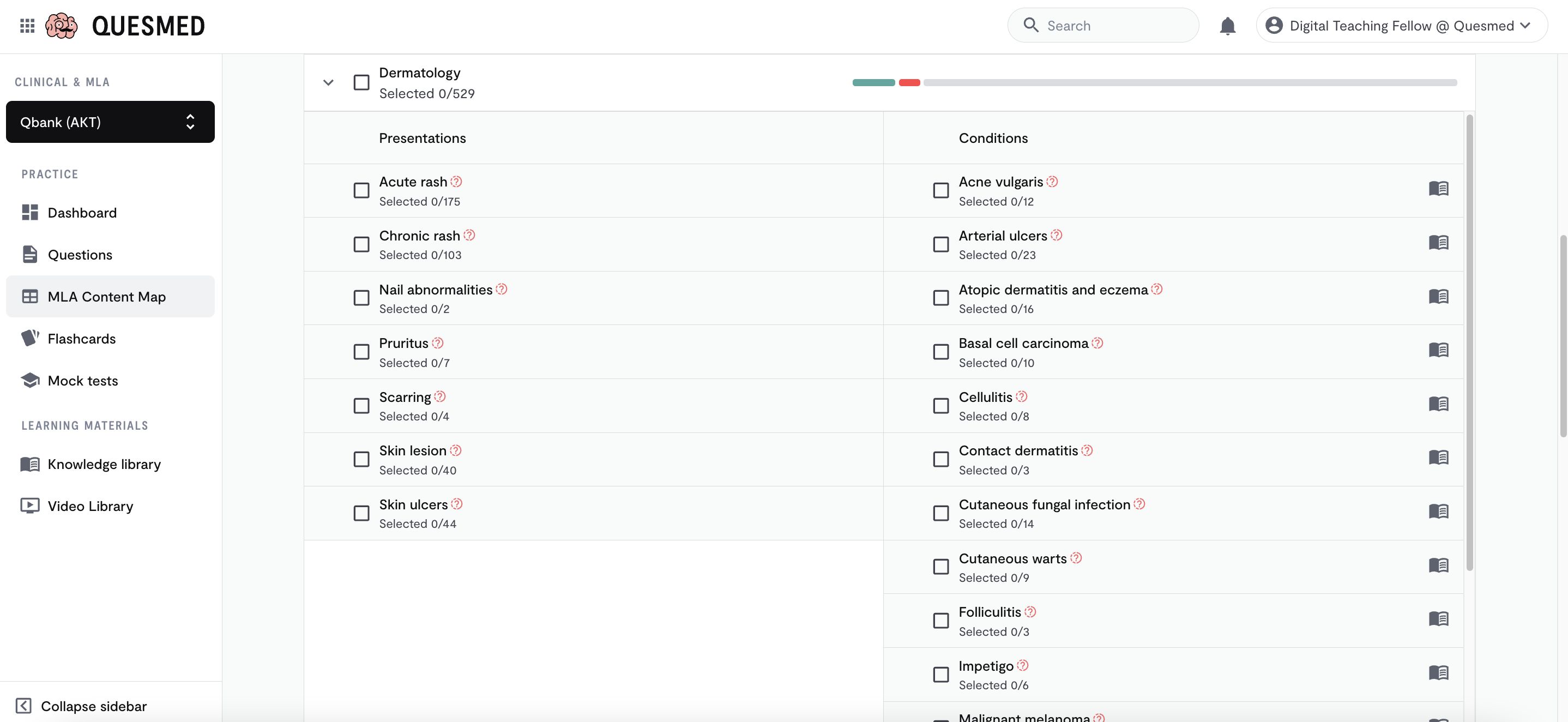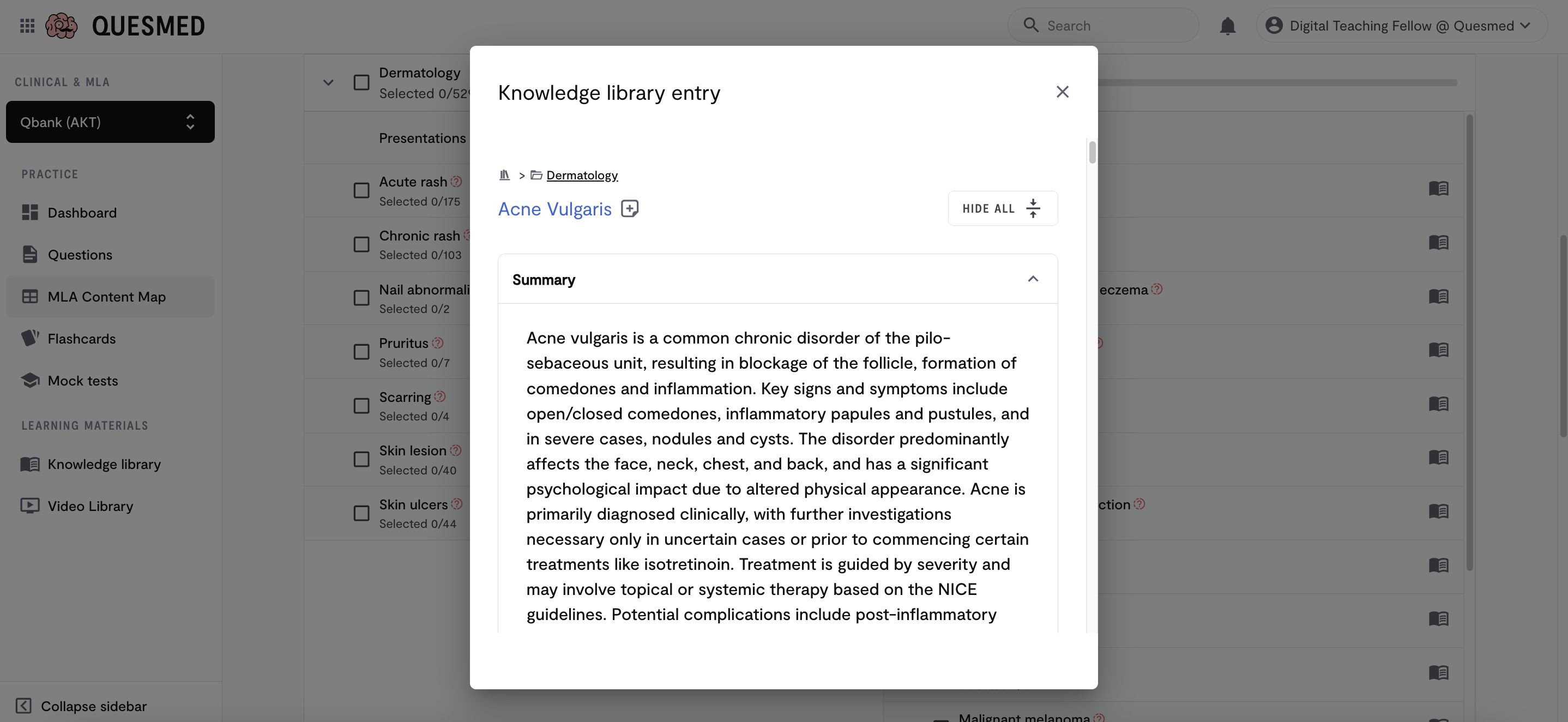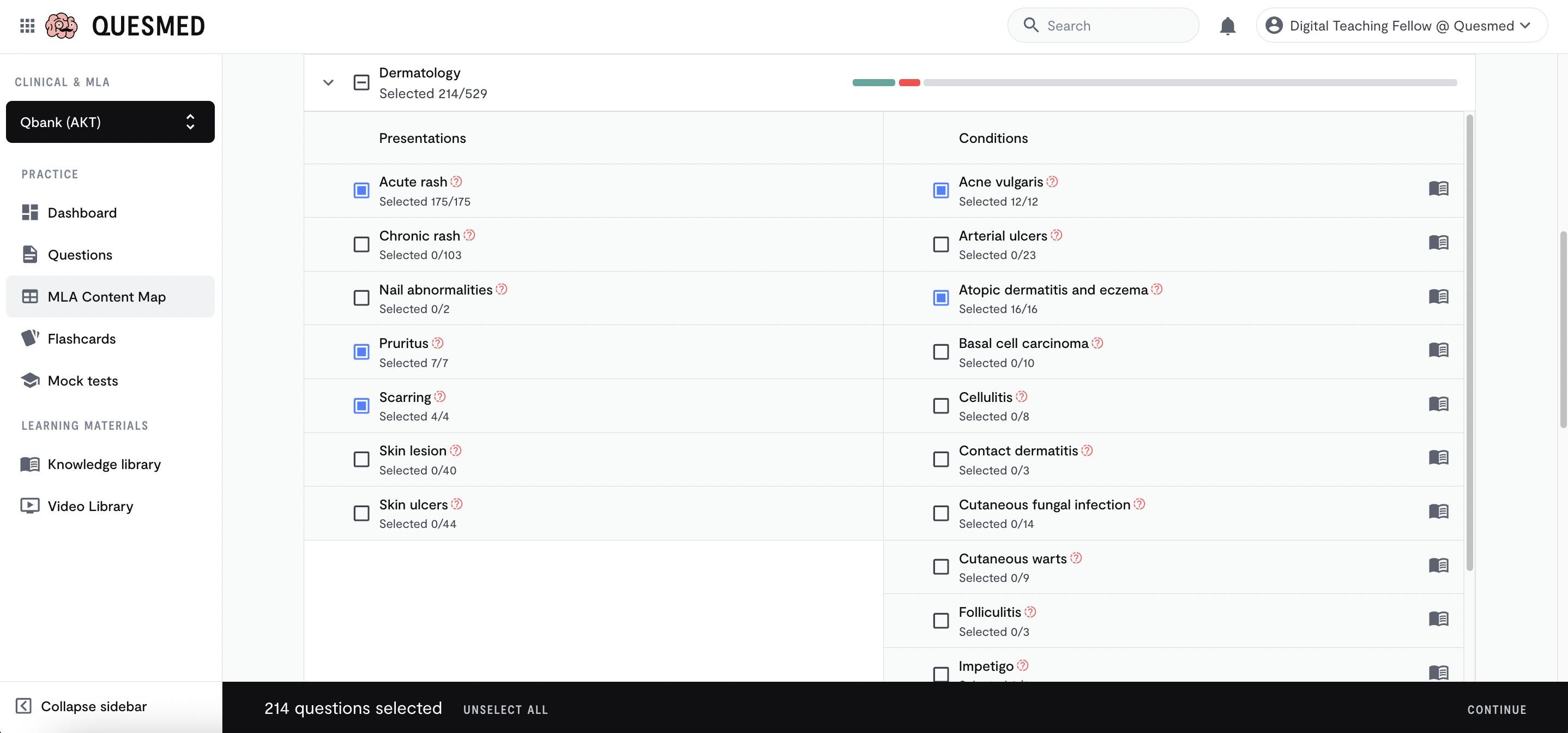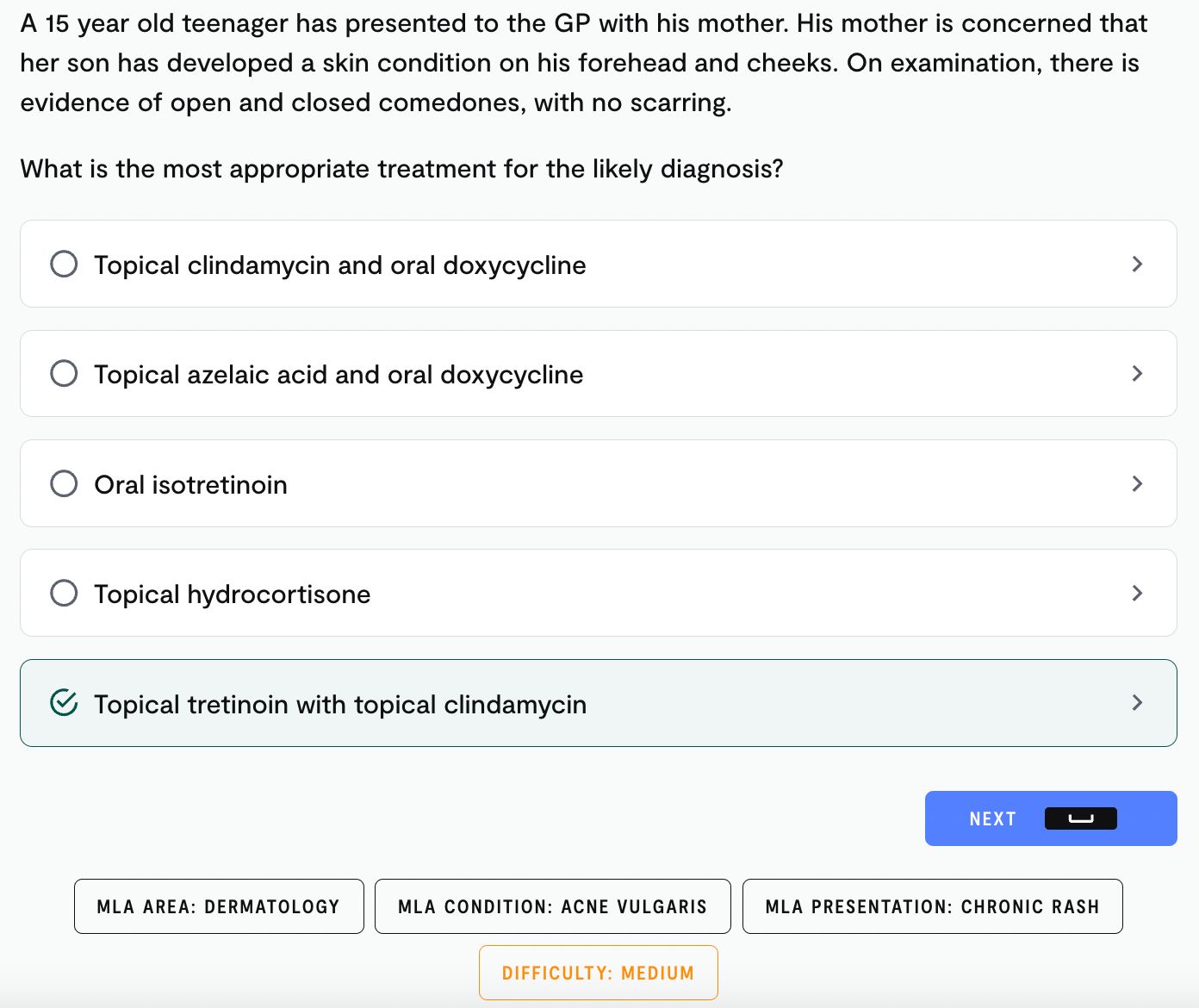We use cookies to enhance your user experience. By clicking ‘Accept’, you agree to store cookies on your device. Find our Privacy Policy.

07.11.2024
Quesmed MLA Content Map | UKMLA
Introduction
The UK Medical Licensing Assessment (UKMLA), also known as MLA, is taken by all medical graduates who wish to practise medicine in the UK, regardless of whether they trained in the UK or abroad. The UKMLA is designed to assess the knowledge and skills of medical graduates to ensure that they meet the required standards for safe and effective practice as doctors. It is a new exam that the General Medical Council (GMC) has introduced from 2024 onwards.
The UKMLA consists of two main components: the Applied Knowledge Test (AKT) and the Clinical and Professional Skills Assessment (CPSA). For UK-based medical students, these are the equivalent of ‘Finals’ and ‘OSCEs/OSLERs’ respectively. For IMGs, these are very similar to PLAB 1 and PLAB 2 respectively.
Content Map
The GMC have produced a content map covering each specialty that will be examined in the UKMLA AKT and CPSA, consisting of core presentations and conditions for each. Although a long document, please don’t be alarmed - in the UK this is very much aligned with your medical school curricula and similarly if you have trained abroad this is likely to be the case too.
The content map is based on the GMC’s ‘Outcomes for Graduates (2018)’, the GMC’s ‘Generic Professional Capabilities Framework (2017)’, and lastly, common scenarios you may face as a Foundation Doctor working in the UK.
The Outcomes for Graduates refers to three themes which helped shape the UKMLA content map:
Readiness for safe practice
Managing uncertainty
Delivering person-centred care
Additionally, the content map is then organised into six main domains:
Areas of clinical practice
Areas of professional knowledge
Patient presentations
Patient conditions
Clinical and professional capabilities
Practical skills and procedures
Here’s an example of what you can find in the content map. At Quesmed, our knowledge library is aligned to the UKMLA, covering exactly what you need to know for the exam:

Quesmed MLA Content Map
At Quesmed, we have carried over all of the areas of clinical practice, core conditions and presentations from the MLA content map and brought it to life with several core features to help make your revision more targeted and effective.

1. Core conditions textbook
You can now access our knowledge library entry for each condition directly via the content map by simply clicking the book icon on the right. This allows you to quickly access relevant content when going through the conditions in each area of clinical practice. Our content map is also fully searchable if you want to find exactly where each presentation and condition is located.

2. Question builder
Our content map can also be used to build customised quizzes tailored to your exam preparation. You can select individual presentations, and/or conditions across multiple areas of clinical practice, if desired. This gives you maximum flexibility while also ensuring your revision is based on exactly what you need to know.

3. Question tags
Our newly introduced question tag feature helps you understand where in the MLA content map each question is relevant to. Questions now have tags demonstrating the area of clinical practice, presentation and condition that they are relevant to, as well as their difficulty. This is particularly helpful for certain conditions which are not explicitly named in the content map, such as Atrial Fibrillation (likely under the umbrella condition ‘Arrhythmias’), that you would definitely need to know for your MLA AKT/CPSA.

Conclusion
Thanks for reading this overview of what the MLA content map is and how to get the most out of our content map feature. We hope this has helped shed light on what is a long and daunting document, and will help enhance your MLA AKT/CPSA preparation. If you have any questions about this, or any of our features please contact us at [email protected]. We wish you the very best of luck!
References
General Medical Council (GMC). UK students' guide to the MLA.
General Medical Council (GMC)(2020). Outcomes for graduates, plus supplementary guidance.
British Medical Association (BMA)(2021). The UKMLA: change is coming, what you need to know.
UKMLA AKT: Everything you need to know for UK Graduates and IMGs - YouTube video (UKMLA vs PLAB)
Share this article